Appendix 1: High Court and District Court workloads since 2004/05
The challenges facing the District Courts and High Court in civil and criminal jurisdictions are similar, and relate primarily to the growing number of cases before the courts. There are some notable regional differences in the number of new cases coming before the courts. The current and future demands in the greater Auckland region are a particular concern, given its rapid growth in population.
Workloads in District Courts
In the last five years, the overall numbers of cases before the criminal summary jurisdiction has increased markedly. In the year to 30 June 2005, 160,396 new criminal summary cases came before the District Courts. In the year to 30 June 2009, 207,623 new criminal summary cases came before the District Courts.
District Courts
Number of criminal summary cases, 2004/05 to 2008/09
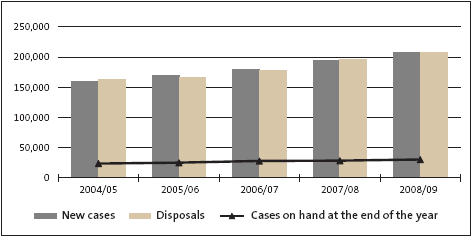
The numbers of new jury cases to come before the District Courts has remained fairly static during the last five years.
District Courts
Number of jury cases, 2004/05 to 2008/09
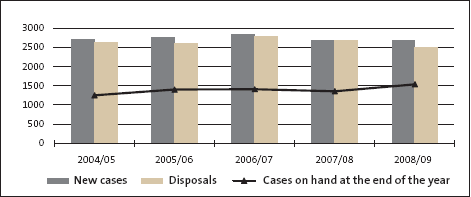
There has been a downward trend in the number of new civil cases coming before the District Courts in the last five years.
District Courts
Number of civil cases, 2004/05 to 2008/09
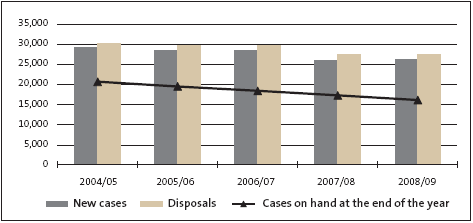
Workloads in the High Court
The following graphs show the number of new cases for Associate judges9, jury trials, and civil cases heard in the High Court in the past five years. Highlights from the graphs include:
- the total workload handled by Associate judges has increased by 77% between 2005 and 2009;
- the number of new jury trials in the High Court peaked in 2006, then declined (there was a large drop in 2008 because some drug cases were moved to the District Courts); and
- apart from a rise in new cases in 2008, the number of new civil trials in the High Court has remained fairly consistent during this period.
High Court
Number of Associate judge cases, 2004/05 to 2008/09
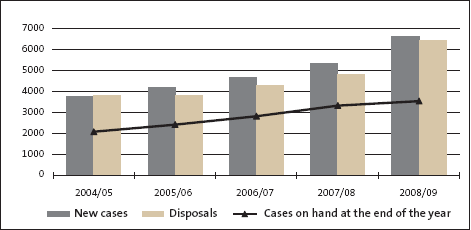
High Court
Number of jury cases, 2004/05 to 2008/09
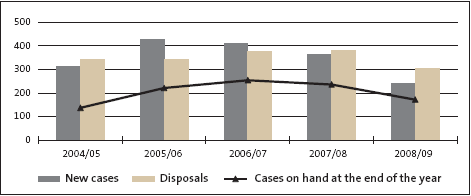
High Court
Number of civil cases, 2004/05 to 2008/09
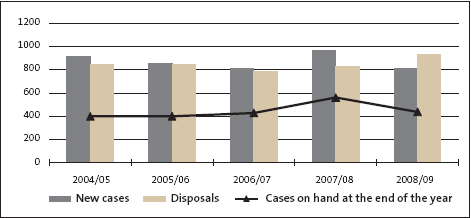
Cases on hand
Each of these graphs show the number of cases on hand (these are cases still in the court system at the end of the year). The number of cases on hand is an indicator of how well courts are keeping up with the number of cases entering the court system. If the number of cases on hand is increasing, the courts are not keeping up with new business. The graph showing the number of Associate judge cases heard by the High Court clearly shows that the number of cases in hand is increasing. The graph for jury cases in the High Court shows the effect of moving some drug cases to the District Courts in 2008.
Case disposals
The graphs also show the number of case disposals.10 Case disposals have increased along with growth in the criminal summary jurisdiction of the District Courts and the Associate judge jurisdiction of the High Court – the two jurisdictions that have seen the largest growth in new cases. Additional judges have been appointed to each jurisdiction during the past five years, which has helped the courts keep up with the increase in cases. However, despite improvements in disposals, the number of cases on hand is growing in the criminal summary and Associate judge jurisdictions.
High Court case disposals exceeded new cases in both jury and civil jurisdictions at the end of the 2009 financial year.
9: Associate judges carry out a range of civil case work, including insolvency matters.
10: Courts "dispose" of cases in a variety of ways. For example, by reaching a verdict or when a charge is withdrawn.
page top
